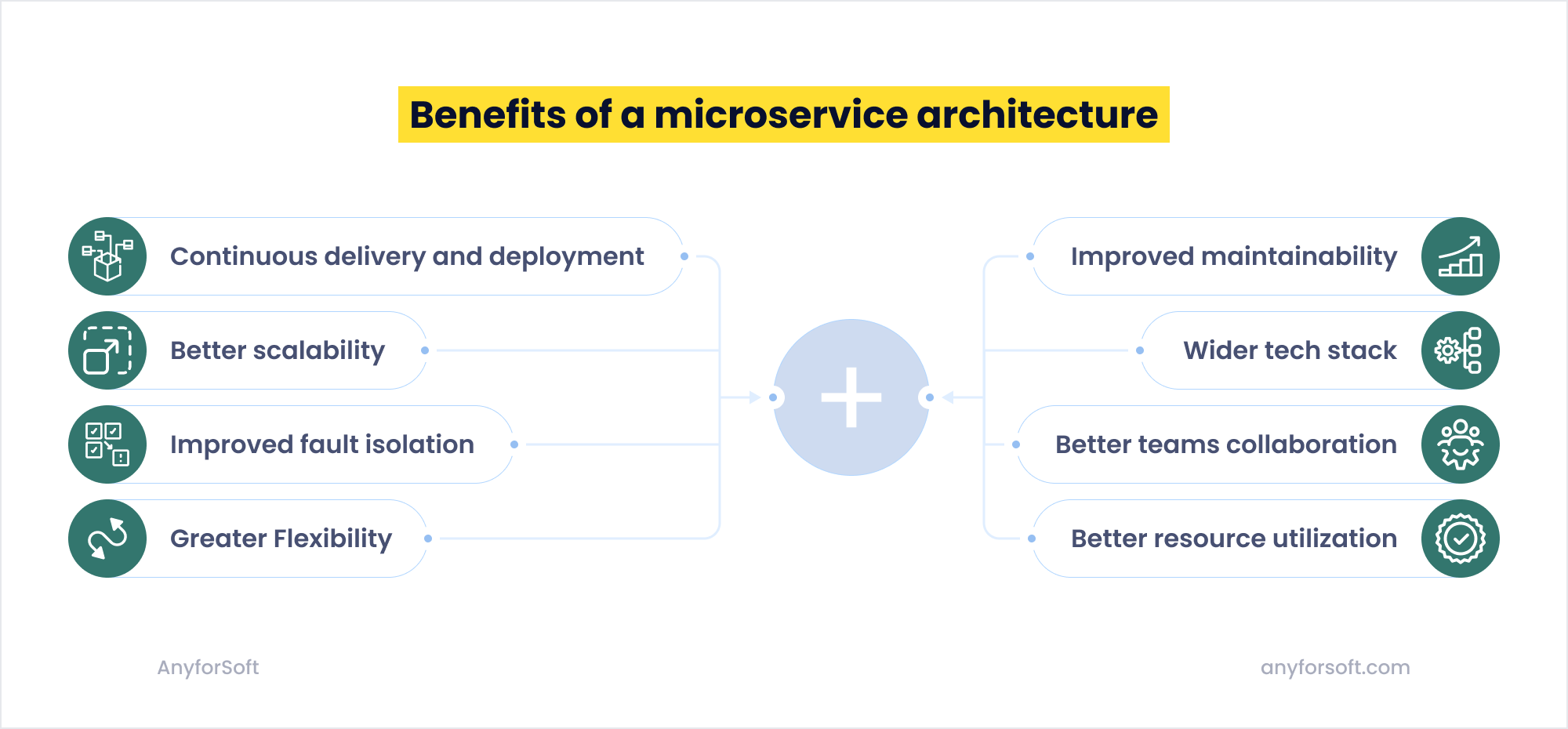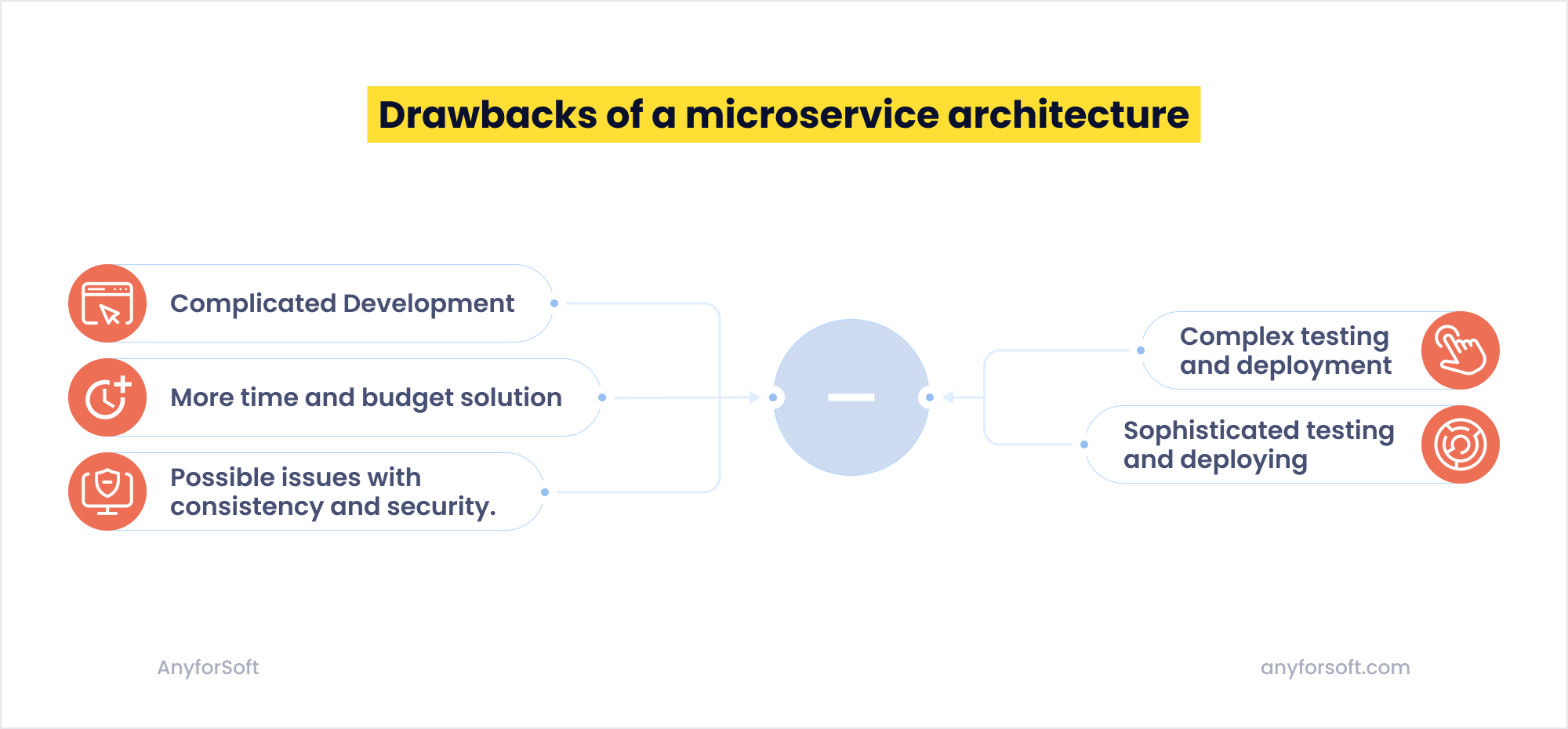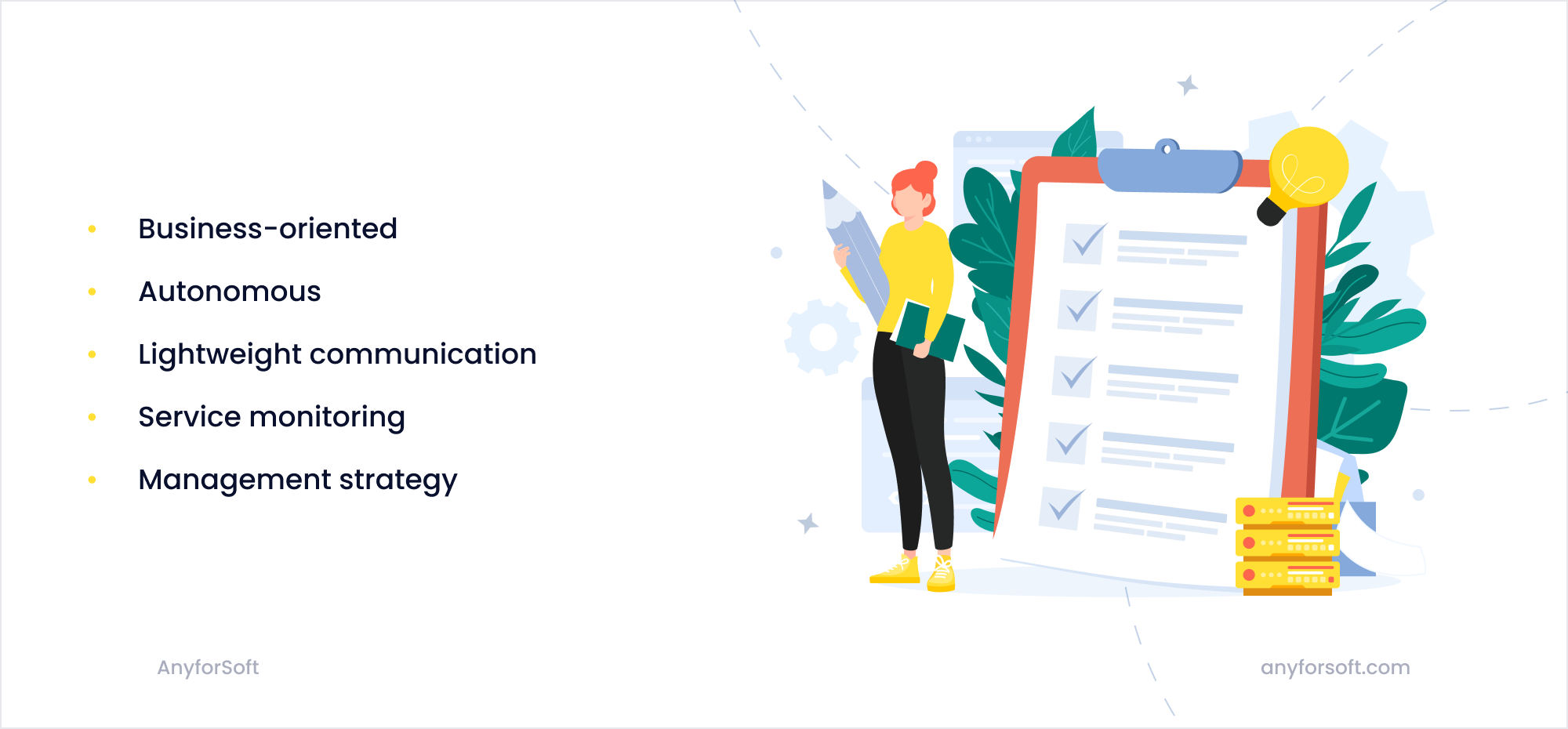Through time digital product development has changed different views and approaches, striving to find the best way of creating innovative solutions. Today microservices architecture has replaced the monolithic structure that was used for application development before. If you want to know what are the benefits of microservices and how to use them, you're in the right place. Here is a list of the benefits of microservices architecture, its drawbacks, and ways to use it to get the most.
What Is Microservices Architecture?
In short, it is a software development approach that structures monolithic applications as a collection of small, independent services, each with its own unique functionality.
Microservices architecture is a way to build software systems composed of independently deployable, modular services. Each service runs in its own process and communicates with other services through lightweight mechanisms, such as HTTP/REST or message queues. Its main goal is to break down large monolithic applications into more minor, more manageable services, making it easier to develop, deploy, and maintain them. To ensure this is precisely what you need for your project, thoroughly explore microservices' advantages and disadvantages.
Advantages Of Microservices Architecture

Developing an entire application at once can be challenging for engineering teams as it requires big resources and complicated inner processes. And while currently popular Python development services that are quite suitable for building modern monolithic applications can solve some of the issues, they are also used to create a separate microservice. This is where the benefits of a microservices architecture become essential.
- Agility and scalability. Since microservices can be developed, tested, and deployed independently, it enables faster release cycles and faster time-to-market. This architecture makes it easier to scale individual services based on demand rather than scaling the entire application.
- Mixing different programming languages and frameworks. It gives developers more flexibility and freedom to choose the best tool from the available technology stack. However, for example, developing a monolithic application does not require such a wide range of programming languages – it is enough to use the most successful option for a specific task.
- Ensuring fault isolation. Since each service is independent, a failure in one service will not affect the entire application. This key benefit of microservices architecture makes it easier to identify and fix issues, reducing the risk of downtime and improving the overall reliability of the application.
- Better development teams collaboration and faster development cycles. With microservices, developers can work on specific services without interfering with the work of others. With this architecture, parallel engineering becomes possible, which speeds up the development process and allows organizations to release new features and updates more quickly.
- Cloud computing implementation. After all, now services can be run not only on different servers but also on storage, including cloud ones. It allows for increasing the accessibility of the application for both the user and the developer, which is easier to make changes or update individual parts instead of the entire system.
- Improved resource utilization. Since microservices are independent, they can be deployed on different servers or clusters, allowing for better utilization of resources. This microservices advantage can result in cost savings and improved performance.
- Adoption of a modular approach to development. Each microservice can be developed and tested separately. It allows organizations to easily add new features and functionality without changing the entire application.
- Gainful continuous deployment and continuous integration. Microservices application architecture unlocks CI/CD capabilities. In contrast, in developing a monolithic application, you can't get the most out of CI/CD since each part of the app depends on another one.
As you can see, this developing type is the most preferable for continuous delivery.
Disadvantages Of Microservices Architecture
While there are many benefits of microservices architecture, it also comes with some drawbacks that organizations should be aware of.

Complex To Manage
One of the main disadvantages is that microservices can be complex to manage. Ensuring that they are all functioning properly and communicating effectively with other services can be challenging with multiple services. Additionally, the increased number of services can lead to higher infrastructure costs, as each service requires its own set of resources. Of course, it all can be easily solved with an experienced service provider.
Consistency Issues
Preserving consistency, security, and availability across multiple services can be challenging. Since each service is developed independently, it can be difficult to ensure they all use the same data models and adhere to the same standards. Microservices require a higher degree of inter-service communication, which can introduce latency, errors, and other issues associated with distributed systems.
Time and Budget Consuming
Building and testing a microservices-based application requires a higher level of investment in terms of time, effort, and resources. Developers must build and test each service individually, and there may be a need for additional tooling and infrastructure to support the distributed nature of the system.
Operational Challenges
As microservices architecture is more distributed, there may be operational challenges in terms of monitoring, logging, and troubleshooting. Operations teams need to have a comprehensive view of the entire system and be able to identify and resolve issues quickly.
Increased Resource Usage
This development approach requires more resources, such as memory and CPU, compared to a monolithic architecture, as each service runs on its own instance. This can lead to higher infrastructure costs, especially if services are not designed for optimal resource utilization.
Among the weaknesses is also called data security because the development of each application element and the need to connect each of them with the other can leave room for a breach and data leakage. However, this issue is also solved using reliable tools and solutions.
Best Practices For Building Microservices

If the benefits of microservices prevail over drawbacks, here are some pro tips to follow to successfully shift from monolithic application development or service-oriented architecture to microservice architecture.
- It is crucial to design services around business capabilities rather than technical functions. This helps to ensure that each service is focused on a specific business need and can be easily understood by both business and technical stakeholders.
- Take care of autonomy. Services should function independently and make decisions based on their own data and logic. These microservices' benefits help prevent services from becoming too dependent on each other and make it easier to scale and replace individual services.
- Use lightweight communication mechanisms, such as REST APIs, to enable services to communicate with each other. This ensures that services are not overly dependent on specific communication protocols and can be easily integrated with other systems.
- Finally, it is crucial to have a well-defined service monitoring and management strategy so that the performance of individual services can be tracked and issues can be quickly identified and addressed. This is how you can turn the pitfall into one of the strengths.
Adopting these best practices, you can successfully build and maintain microservices-based applications. For example, our product development team is well aware of the advantages and disadvantages of microservices and the complexity of development. However, this architecture became the best-fitted solution for one of our latest projects, which required several microservices to operate within one application.
Microservices Use Cases
Considering the benefits of microservices, this architecture can be applied to a wide range of projects across different industries. One common use case is in e-commerce, where microservices can be used to build a scalable and robust platform for online shopping. By breaking down the application into more minor services, organizations can easily add new features and functionality to the platform, such as payment processing, order management, and inventory management.
Microservices architecture can also be applied in the financial industry, which can be used to build scalable and secure platforms for banking and financial services. In this case, it is logical to separate some of the essential features, such as payment processing, account management, and fraud detection.
In the entertainment industry, it can be used to build scalable and robust platforms for streaming video and audio content. Smaller services allow to easily manage and distribute large amounts of content while also providing a personalized viewing experience to users.
Conclusion
With its versatility and adaptability, microservices architecture can be adopted by companies in various industries. The key benefits of microservices, like agility, scalability, fault isolation, team collaboration, and better resource utilization, are a strong argument for choosing this type of development. However, it also has some drawbacks, such as complexity and consistency issues. While following best practices for building microservices, you can ensure success with this approach, a reliable and experienced partner is still required.
If you have an idea that requires the assistance of a mature product development team, feel free to contact our managers to learn more about the pros and cons of microservices for your project specifically and discuss cooperation.
